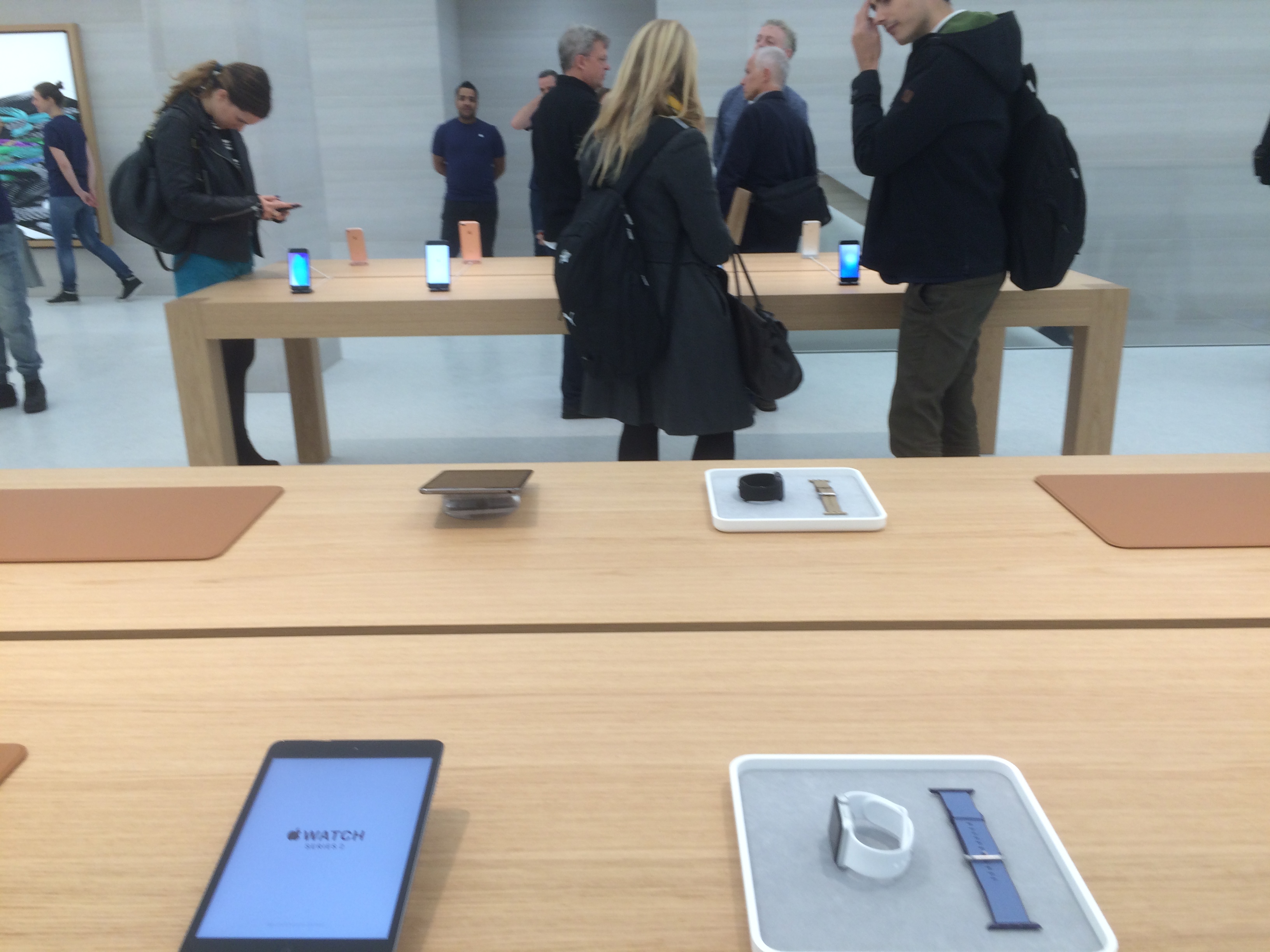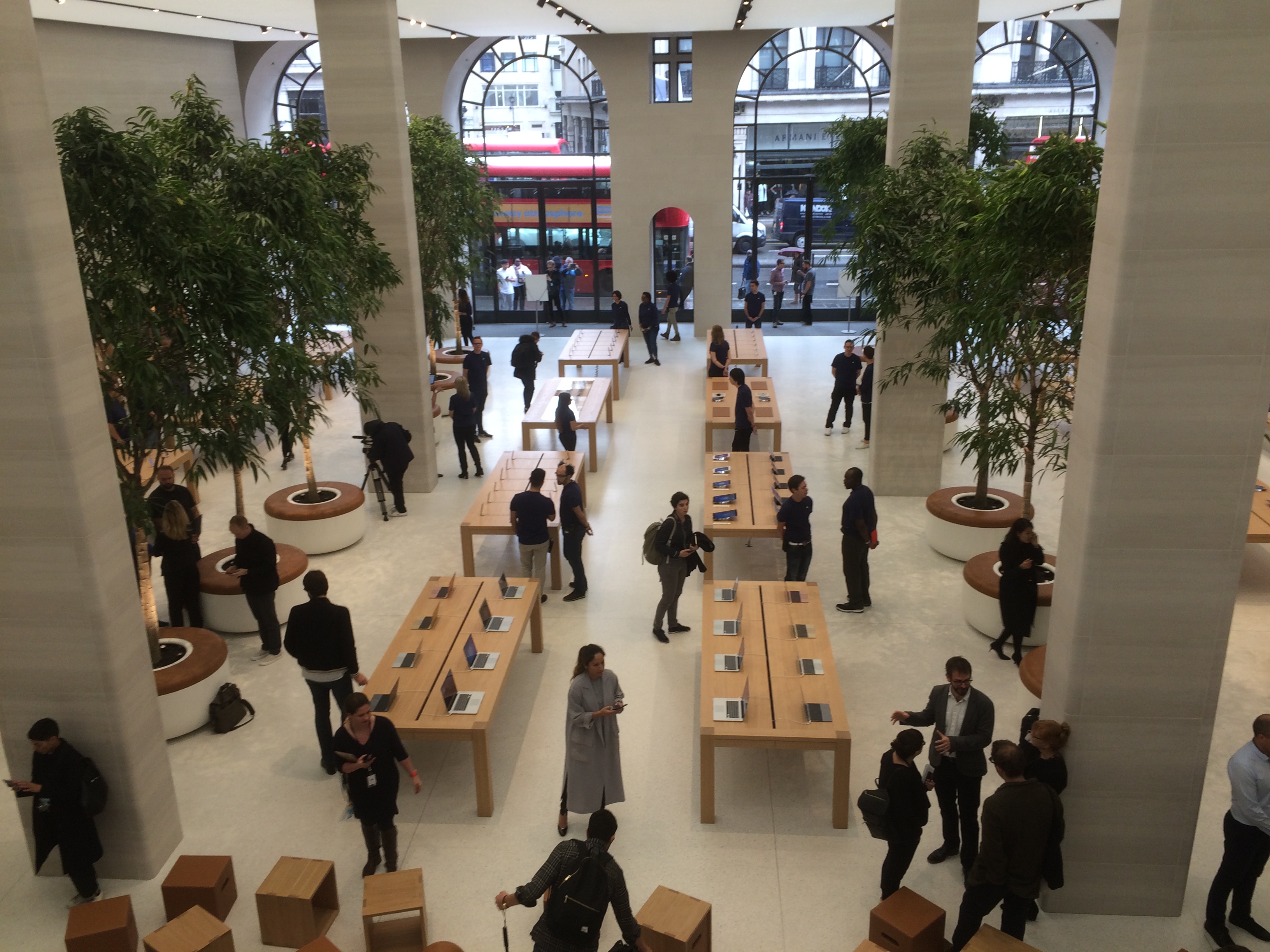Apple reveals redesigned flagship London store
Tech giant Apple has unveiled the new interiors of its store on London’s Regent Street, which aim to create a more human feel through natural materials and open space.

Apple has redesigned its flagship London store on Regent Street, with the hope of making it more “people-centred”, according to architect Foster + Partners.
The store has been redesigned by the architectural practice alongside Apple’s in-house design team, headed up by Apple chief design officer Jonathan Ive.
The new Apple store also sees the addition of Creative Pros, a series of software specialists who will be joining hardware specialists Apple Geniuses to assist customers.
Removing central staircase to create space
Space has been opened up in the centre of the store by removing the mezzanine level which covered the bottom floor, and the central glass staircase.
Stairs to the first level are now situated at the back of the store, and the first level no longer directly covers the ground floor. This places more attention on the stone pillars and trees scattered around the store.
More natural materials
The glass staircase has been replaced by one made of Castagna limestone, which is in line with the overall transition for the store. The store sees steel and glass replaced by stone walls, bronze and oak features and terrazzo flooring.
The use of more natural materials aims to reflect the architecture and heritage of the building, and of Regent Street itself, says Apple.
The exterior façade of the building, which is Grade II Listed, is made of Portland stone, Carrara marble and Venetian Smalti Glass, and has been retained and refurbished as part of the redesign.
Replicating an “amphitheatre”
Rafe Bertram, partner at Foster + Partners, says: “We removed the glass staircase and the mezzanine for two reasons – so that the huge, beautiful arches at the front of the store could be seen, and to create space for people at the centre.”
The top floor is dedicated to tables that will be used as learning areas for workshops and seminars, and a private boardroom space at the back for customer consultations and business meetings.
“Inspired by a town square”
The peripheries of the ground floor also include interactive wall displays, showing Apple’s products and services in action.
The new store aims to replicate the shape and style of an ancient amphitheatre, says Bertram, and has been “inspired by the idea of a town or village square”, with “shops” on the sides.
“More people can be a part of what is happening now,” he says. “The Apple stores are having a continual evolution. There’s an overall philosophical debate about life and tech and how they interplay. Previously, the environment reflected the computer and devices. Now we all view tech as more integrated into our lives so we wanted to create an environment for people to interact with the opportunities that tech can offer, and provide areas for creativity and learning.”
Opens 15 October
The new Regent Street store adopts elements of Apple’s Union Square store in San Francisco, unveiled in May this year, but has “evolved” further, says Bertram.
The store redesign follows the opening of an interactive Dyson store in central London on Oxford Street in May, which takes on a similar style to Apple of educating customers through live demonstrations.
The new store opens on 15 October at 235 Regent Street, London W1B 2EL.














“The glass staircase has been replaced by one made of Castagna limestone … The store sees steel and glass replaced by stone walls, bronze and oak features and terrazzo flooring.” Beautiful stuff.
Sadly whilst this is a really beautiful bit of design, it’s not lost on me that the budgetary constraints on what Apple have achieved with the help of Foster + Partners has undoubtably been eased considerably by the fact that Apple, as a company, is dodging paying tax.
It would be nice if Design Week could remember this fact and inject a tiny bit of context in the article. The truth is that Apple and other corporations, Google being another good example, can afford these lavish refurbishment project precisely because they are not paying their fair share of tax.
I’m sure some of the designers, architects and creatives who are reading this would love to have a building to work from with a Castagna limestone staircase, I know I would. However I tend to view facing up to my social responsibilities as slightly more important.